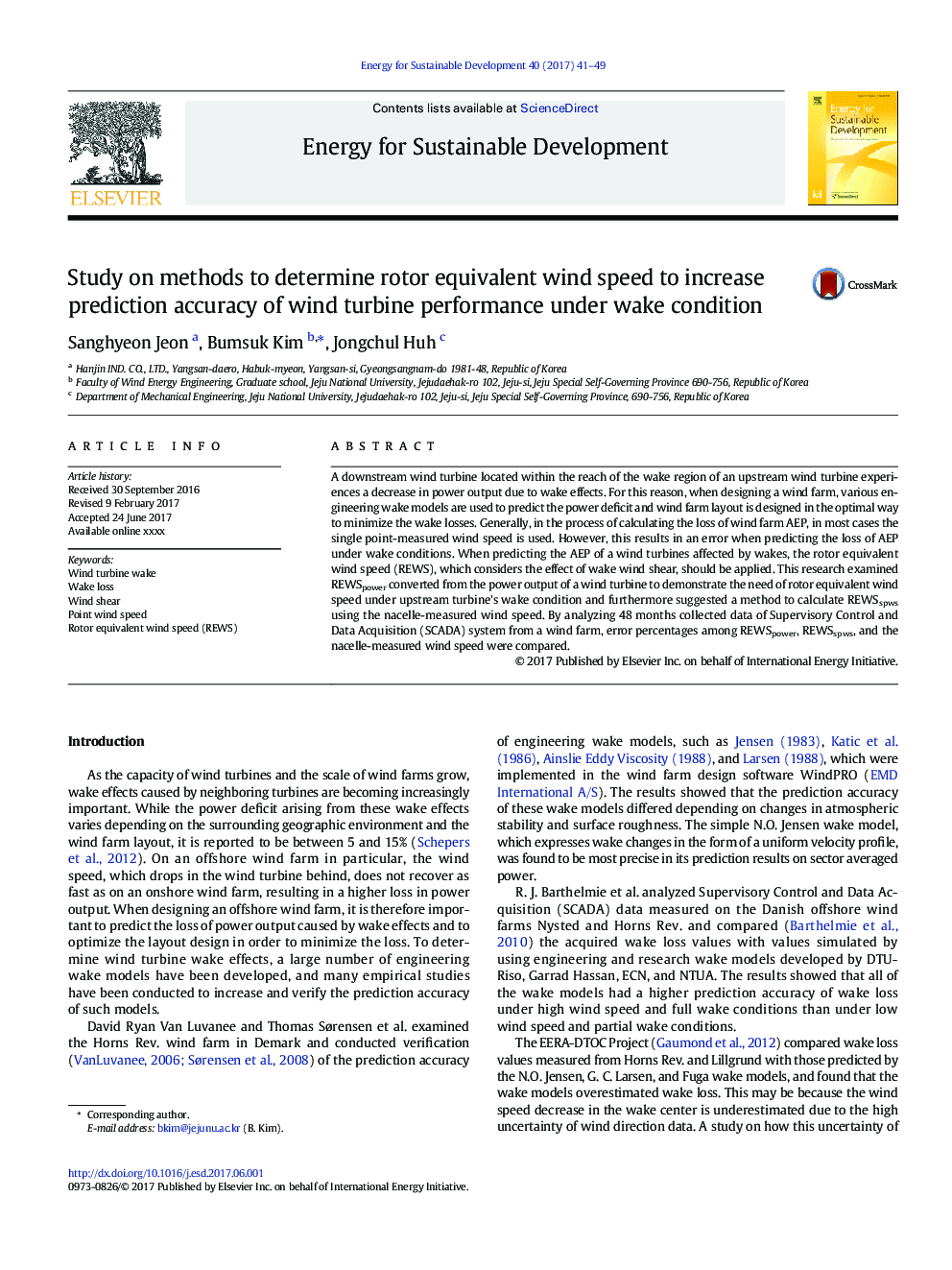| Article ID | Journal | Published Year | Pages | File Type |
|---|---|---|---|---|
| 5114316 | Energy for Sustainable Development | 2017 | 9 Pages |
Abstract
A downstream wind turbine located within the reach of the wake region of an upstream wind turbine experiences a decrease in power output due to wake effects. For this reason, when designing a wind farm, various engineering wake models are used to predict the power deficit and wind farm layout is designed in the optimal way to minimize the wake losses. Generally, in the process of calculating the loss of wind farm AEP, in most cases the single point-measured wind speed is used. However, this results in an error when predicting the loss of AEP under wake conditions. When predicting the AEP of a wind turbines affected by wakes, the rotor equivalent wind speed (REWS), which considers the effect of wake wind shear, should be applied. This research examined REWSpower converted from the power output of a wind turbine to demonstrate the need of rotor equivalent wind speed under upstream turbine's wake condition and furthermore suggested a method to calculate REWSspws using the nacelle-measured wind speed. By analyzing 48Â months collected data of Supervisory Control and Data Acquisition (SCADA) system from a wind farm, error percentages among REWSpower, REWSspws, and the nacelle-measured wind speed were compared.
Keywords
Related Topics
Physical Sciences and Engineering
Energy
Energy (General)
Authors
Sanghyeon Jeon, Bumsuk Kim, Jongchul Huh,
